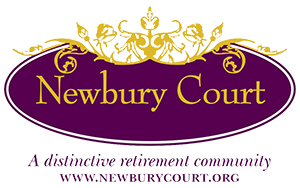Search
Friday, April 25, 2014, Mechanics Hall, Worcester
Saturday, April 26, 2014, Faneuil Hall, Boston
Pre-concert lecture by Kaylan M. Stevenson
from Symphony in Bb Major, HI:85 (“La reine”) Joseph Haydn (1732-1809)
(a period arrangement for flute, violin, cello, and fortepiano)
Adagio-Vivace
Sonata in Eb Major for piano and violin, op. 1, no. 3 Georg Maurer (fl. 18th c.)
Allegro moderato • Rondo (Allegro)
Piano Concerto in Eb Major, op. 13, no. 2 Theodore Smith (c.1740 - c. 1810)
Allegro moderato • Minuetto con espressione • Vivace .
Washington’s Minuet (from United States Country Dances) Pierre Landrin Duport (1762 or 1763-1841)
Dances
Successful Campaign • Young Widow • Lord Howe’s Jig
Intermission
Quartet in D Major for flute and strings, Benton 381 Ignace Pleyel (1757-1831)
Allegro molto • Adagio • Rondo (Allegro)
from Symphony in Bb Major, HI:85 Haydn
Finale (Presto)
Washington’s Gavott (from United States Country Dances) Pierre Landrin Duport
Dances
Soldier’s Joy • Stoney Point • George Washington’s Favourite Cotillion
Dances for audience participation: Away to the Camp • Virginia Reel
Musicians of the Old Post Road
Suzanne Stumpf, flute; Sarah Darling, violin
Marcia Cassidy, viola; Daniel Ryan, cello; Michael Bahmann, fortepiano
Reel Nutmeg, Helen Davenport, Director
The Worcester concert is funded, in part, by the Fletcher Foundation.
Program Notes
George Washington was the epitome of the self-made gentlemen. Coming from a family of modest social stature, he made a concerted effort to make his way into society through careful study of all the social graces and behaviors that would be advantageous to him. This study was so methodical that, at the age of fourteen or fifteen, he sat down and wrote for himself 110 “Rules of Civility and Decent Behavior in Company and Conversation.”
For an eighteenth-century gentleman, proper physical comportment was of utmost importance and along with this came one of the paramount social graces: dancing. Recognized as a fine dancer, Washington was once complimented by French officers who declared that his dancing could not have been improved by a Parisian education. His abilities no doubt helped ease his way in his social contact with political leaders, diplomats, and military officers. Although it is difficult to connect specific dances with Washington, the dances chosen for this program were all popular dances of the period with which he was likely familiar or dances written in his honor.
Although there is no direct evidence of Washington having studied music or having played an instrument, it would have been inconceivable had he not engaged in some musical study during his lifetime: music was a normal and expected part of the education of members of the social class he aspired to. In any case, as an adult, Washington claimed to be without musical talent himself, but he did appreciate music, and music-making was a ubiquitous activity in the Washington household. Martha Washington was musically literate, probably played the harpsichord passably, and most importantly, fostered the musical education of her children and grandchildren. Martha had two children from a previous marriage: John “Jackie” Parke Custis, who played violin and flute, and Martha “Patsy” Parke Custis, who played harpsichord. Patsy’s early instruction is documented through a book of manuscript pieces most likely handwritten by her music master John Stadler.
By far the most talented member of the Washington household was Martha’s granddaughter Eleanor “Nelly” Parke Custis, whom the Washingtons raised in their household. Martha was engaged in every aspect of Nelly’s education and placed a special emphasis on her musical study. Nelly reportedly spent many hours each day practicing harpsichord, fortepiano, and singing. Martha engaged the best teachers in the area, including the prominent composers Alexander Reinagle, John Christopher Moller, Henry Capron, and the Italian singer Filippo Trisobio. Martha’s diligent directing of her education helped Nelly become a woman of great accomplishment and refinement. In 1798 the Polish gentleman and writer Julian Niemcewicz described her in his diary as “one of those celestial figures that nature produces only rarely, that the inspiration of painters has sometimes defined and that one cannot see without ecstasy. Her sweetness is equal to her beauty, and this being, so perfect a form, possesses all the talents: she plays the harpsichord, sings, and draws better than any woman in America or even in Europe.”
Nelly’s performances were a regular part of the bustling hospitality of the Washington’s Mount Vernon home, a place that was rarely without visitors. A good portion of the music that she owned and performed is still extant at Mount Vernon and in other archives. This repertory includes not only vocal and instrumental works that were composed and published by her teachers, but an array of original keyboard works and arrangements from some of the finest composers of the day, including Haydn, Pleyel, and Kozeluch as well as works by more obscure composers such as Theodore Smith and Georg Maurer.
Our program begins with a chamber arrangement of Haydn’s Symphony no. 85, a work that was performed frequently in American public concerts during the period and a piano arrangement of which was owned by Nelly. This work, one of Haydn’s “Paris” symphonies, became known as La reine (The queen) because Marie Antoinette declared it her favorite. The practice of creating arrangements of symphonic works began in the late eighteenth century and became increasingly popular in the early nineteenth century as a means to bring large-scale works into the home. The chamber arrangement of Symphony no. 85 presented on this program was made by Ludwig Wenzel Lachnith, a Bohemian composer and horn player who was active in Paris in the 1780s. In keeping with the custom of the time, we are opening our concert with the its first movement and closing the concert-music portion of the program with its last movement.
Although Nelly owned and presumably performed many works written for keyboard and obbligato instruments, there is no evidence that her performances ever included these additional instruments. In fact, many of these obbligato instrumental parts were bound with the piano part, making such performances impossible. Among these works is a set of sonatas by Georg Maurer. Very little remains known about this obscure composer other than that he published two sets of accompanied piano sonatas. The work chosen for our program is from his first set. Composed in the popular two-movement format of early classicism, the work displays lively, inventive thematic development. In contrast, however, to many other early Classical sonatas, the violin engages in interesting melodic dialogue with the piano, rather than merely providing supportive accompaniment.
Theodore Smith (born Theodor Schmidt) was a German composer active in England. He was well-known in his day as a composer of vocal works for the pleasure gardens of London and composed many instrumental works that were popular in England and America. His six op. 13 concertos, a copy of which was owned by Nelly, were probably written for performances in London in the 1760s. These concertos were conceived with a fully-composed keyboard part, allowing them to be performed without the additional instruments. An attractive feature of the second concerto is its imitation of hunting horn calls that fade into the distance at various points in the third movement.
A composer represented prominently among the works preserved at Mount Vernon is Ignace Pleyel. A former student of Haydn, Pleyel achieved great renown during his lifetime, and his music was widely distributed and performed throughout Europe and in early America. The Mount Vernon collection contains many sets of sonatas, some originally for piano solo, others arranged for piano from his quartets and trios. For this program we have chosen to perform one of Pleyel’s quartets in its original instrumentation. His Quartet in D Major amply demonstrates his success as a composer. It contains memorable, catchy themes, engaging contrasts, lively instrumental dialogue, and humorous surprises. No wonder Pleyel’s music caught the attention of Mozart, who in 1784 wrote to his father: “I must tell you that some quartets have just appeared, composed by a certain Pleyel, a pupil of Joseph Haydn. If you do not know them, do try to get hold of them; you will find them worth the trouble. They are very well written and most pleasing to listen to.”
— © Daniel Ryan and Suzanne Stumpf, with Kaylan M. Stevenson











Daniel Ryan and Suzanne Stumpf, Artistic Directors
349 Boston Post Road, Weston, MA 02493
tel. (781) 466-6694
All content © Musicians of the Old Post Road
Privacy Policy
Terms & Conditions
